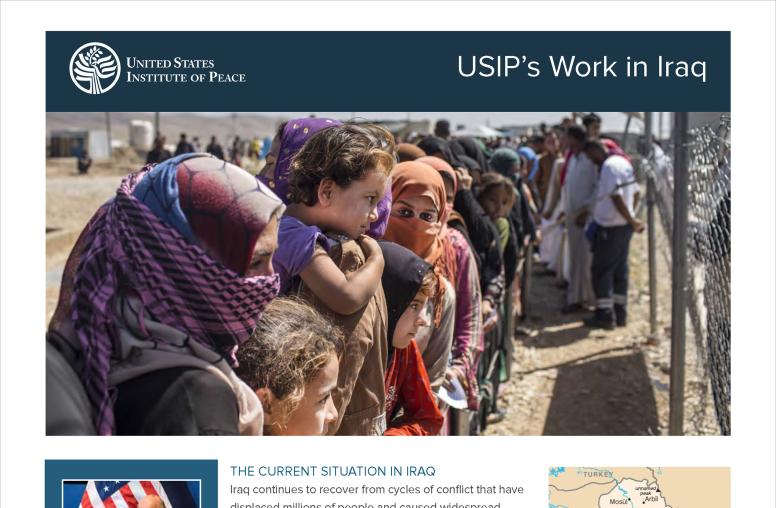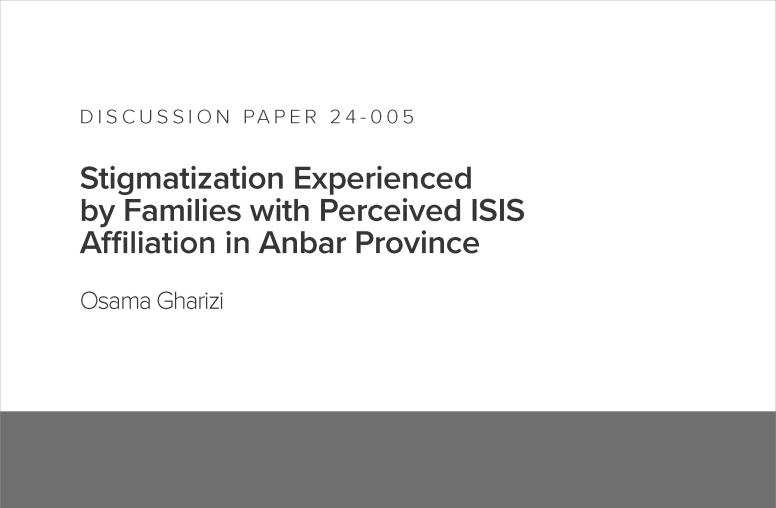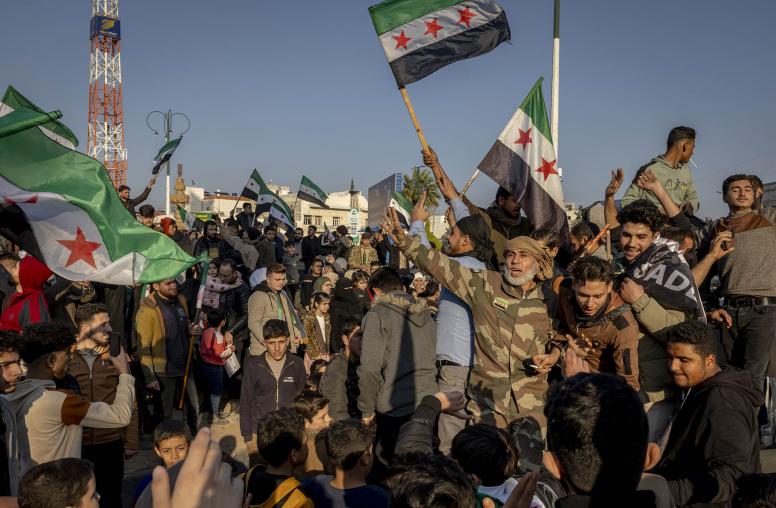The Treasury Approach to State-Building and Institution-Strengthening Assistance: Experience in Iraq and Broader Implications
Drawing on a series of consultations convened by USIP's Center for Sustainable Economies, author Jeremiah S. Pam focuses on the role of the U.S. Treasury Department in finance-related state-building and institution-strenthening. Specifically, the report identifies key dynamics in the field and discusses aiding local institutions, providing technical assistance, improving interagency coordination and enabling local champions for such efforts.

Summary
- The U.S. Treasury Department’s approach to helping states build and strengthen their public institutions responsible for financial management is worth studying both because of the intrinsic importance of these institutions to an adequately functioning government and because it illustrates some key dynamics underlying state-building assistance more generally.
- A key premise of Treasury’s approach is a primary orientation toward assisting local government institutions on mutually agreed-upon reform programs, based on a thorough understanding of the local administrative systems to be reformed. This orientation is reinforced by the fact that Treasury’s contribution is typically only a small number of policy officials and embedded technical advisors, rather than large U.S.-funded programs.
- In the conventional case where state-building and institution-strengthening are pursued as part of a long-term development strategy, Treasury provides assistance through two activities that are organizationally and functionally distinct: advisors fielded by Treasury’s Office of Technical Assistance (OTA), who are technical experts and usually based within local institutions at the request of host governments, and financial attachés, who act as financial policy officials/diplomats and are based at the U.S. embassies in a smaller group of countries.
- In extraordinary situations where state-building follows an intervention (as in Iraq), deployed technical experts need to be partnered with a senior policy official (such as the Treasury attaché) who can create space for local institution–oriented work by shaping (and, where necessary, resisting) the many “centrifugal” external forces—from Washington, the military, and other civilian and international agencies—pulling in other directions.
- Improving interagency coordination mechanisms in Washington might do relatively little to enhance effectiveness by itself. Indeed, tighter Washington interagency “alignment” could end up strengthening Washington coordinating bodies at the expense of knowledgeable field officials and experts. It may be better to create the conditions for more effective interagency coordination in the field by deploying senior policy champions who both understand the importance of a local institution-oriented approach and possess sufficient delegated authority to tame the centrifugal forces necessary to make space for it.
- An expeditionary corps of technical experts by itself is insufficient to deal with the unconventional challenges presented by post-intervention state-building operations because the centrifugal forces present in such an environment are strong enough to undermine even the most sound assistance program absent the support of appropriately oriented policy champions.
About the Report
This report focuses on the role of the U.S. Treasury Department in providing finance-related state-building and institution-strengthening assistance. It draws on a series of high-level meetings and consultations convened by USIP’s Center for Sustainable Economies between May and September 2008. The author of this report, Jeremiah S. Pam, is a USIP visiting research scholar. From May 2006 to May 2007, Pam served as the U.S. Treasury financial attaché in Baghdad, where he was the senior Treasury official in Iraq and led the U.S. Embassy’s financial diplomacy and policy efforts. In March and April 2008, Pam was a member of a team that conducted an assessment of Iraqi governance and U.S. governance assistance efforts throughout Iraq for the U.S. Mission in Iraq and the Multi-National Force–Iraq. Previously, he was an international finance lawyer at Cleary Gottlieb in New York, where he advised governments, including Iraq, on resolving sovereign debt crises.



